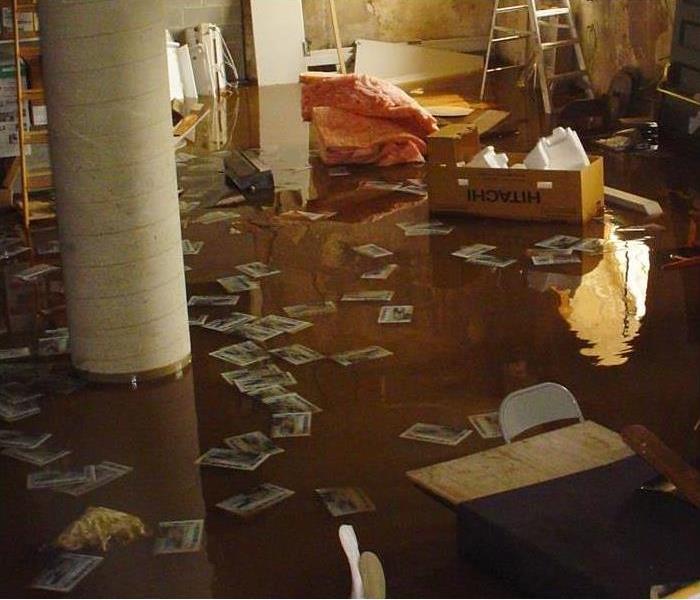The different categories of water damage.
3/2/2021 (Permalink)
Category 1 water loss?
A category 1 water loss is when the water originates from a sanitary water source and does not pose a substantial risk if ingested or inhaled. Some examples of a category 1 water loss: Broken water supply lines. Sink or tub overflows with no contaminants.
Category 2 water loss?
It contains harmful micro-organisms or nutrients for micro-organisms that will help greywater become black water if not attended to too quickly. This type of water is dangerous and only a professional should clean it up.
Category 3 water loss?
Category 3 water loss involves water that is grossly contaminated and can contain pathogenic, toxigenic, or other harmful agents. Such water may carry silt, organic matter, pesticides, heavy metals, regulated materials, or toxic organic substances.
What comes next:
Water damage restoration is often prefaced by a loss assessment and evaluation of affected materials. The damaged area is inspected with water sensing equipment such as probes and other infrared tools in order to determine the source of the damage and the possible extent of areas affected. Emergency mitigation services are the first order of business. Controlling the source of water, removal of non-salvageable materials, water extraction and pre-cleaning of impacted materials are all part of the mitigation process. Restoration services would then be rendered to the property in order to dry the structure, stabilize building materials, sanitize any affected or cross-contaminated areas, and deodorize all affected areas and materials. After the labor is completed, water damage equipment including air movers, air scrubbers, dehumidifiers, wood floor drying systems, and sub-floor drying equipment is left in the residence. The goal of the drying process is to stabilize the moisture content of impacted materials below 15%, the generally accepted threshold for microbial amplification. Industry standards state that drying vendors should return at regular time intervals, preferably every twenty-four hours, to monitor the equipment, temperature, humidity, and moisture content of the affected walls and contents.





 24/7 Emergency Service
24/7 Emergency Service
